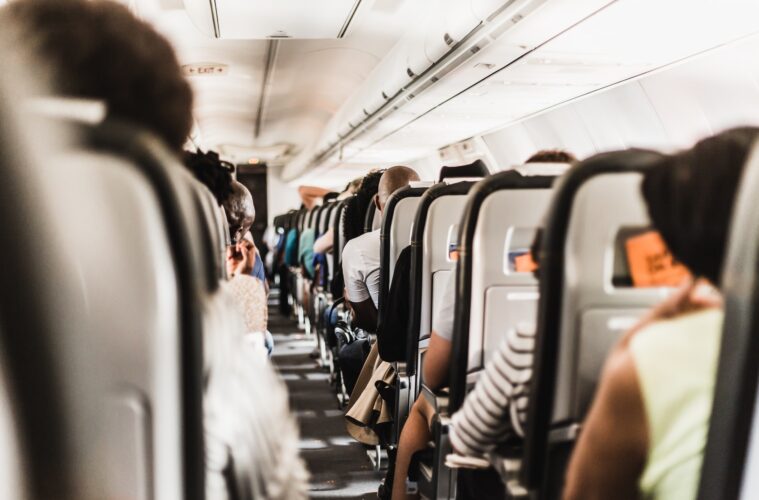Thrombosis, often associated with prolonged periods of immobility or specific conditions, is a significant health concern. Among the various risk factors contributing to thrombosis, long flights have gained attention due to the potential development of blood clots associated with air travel, particularly during extended journeys.
The phenomenon of blood clots, known as deep vein thrombosis (DVT), primarily arises from prolonged periods of inactivity, such as sitting for extended hours during long flights. This condition occurs when a blood clot forms within a deep vein, commonly in the legs. When these clots dislodge and travel through the bloodstream, they can pose severe health risks if they reach vital organs, such as the lungs, causing a pulmonary embolism.
Preventing DVT: How to Minimise Blood Clot Risks During Flights
Several factors contribute to the increased risk of blood clots during flights:
1. Immobility: Sitting for extended periods, such as during long flights, significantly reduces leg movement. Lack of movement can impede blood circulation, leading to blood pooling in the legs and increasing the risk of clot formation.
2. Dehydration: Airplane cabins have low humidity, which can contribute to dehydration. Reduced fluid intake can lead to thicker blood consistency, making it more prone to clotting.
3. Limited space: The confined space in airplanes restricts movement, making it challenging for passengers to stretch or walk around. This lack of movement further contributes to the risk of clot formation.
4. Risk factors: Individuals with pre-existing conditions or risk factors for thrombosis, such as obesity, previous history of DVT, certain genetic conditions, hormone therapy, or a family history of blood clots, may be at a higher risk during long flights.
Preventing blood clots during long flights is crucial. Various measures can significantly reduce the risk of thrombosis:
1. Stay active: Perform in-seat exercises, such as ankle circles, leg raises, and calf muscle contractions, to promote blood circulation. Additionally, take short walks up and down the aisle when possible.
2. Hydration: Drink plenty of water to prevent dehydration and maintain adequate blood flow and consistency.
3. Compression stockings: Consider wearing compression stockings, which promote blood circulation and reduce the risk of clot formation.
4. Avoid excessive alcohol and caffeine intake: Both alcohol and caffeine can contribute to dehydration, so it’s advisable to moderate their consumption during the flight.
5. Know your risk: Individuals with specific health conditions or a history of blood clots should consult a healthcare professional before flying. They might recommend preventive measures or medications to reduce the risk.
It’s important to be aware of the symptoms of DVT, which include pain, swelling, redness, and warmth in the affected leg. If someone experiences these symptoms, they should seek immediate medical attention.
While the risk of developing blood clots during long flights exists, it’s essential to understand that the occurrence of DVT due to flying is relatively low. However, being proactive and taking preventative measures is crucial, particularly for individuals with specific risk factors. Airlines and aviation authorities also continuously work on measures to enhance passenger safety and comfort during air travel.
In conclusion, thrombosis and blood clots associated with long flights highlight the importance of awareness and proactive measures to reduce the risk of DVT. By staying informed, staying active, staying hydrated, and knowing one’s risk factors, individuals can significantly lower the chances of experiencing blood clots while flying. Seeking professional advice for those at higher risk is crucial to ensure a safe and comfortable travel experience.

